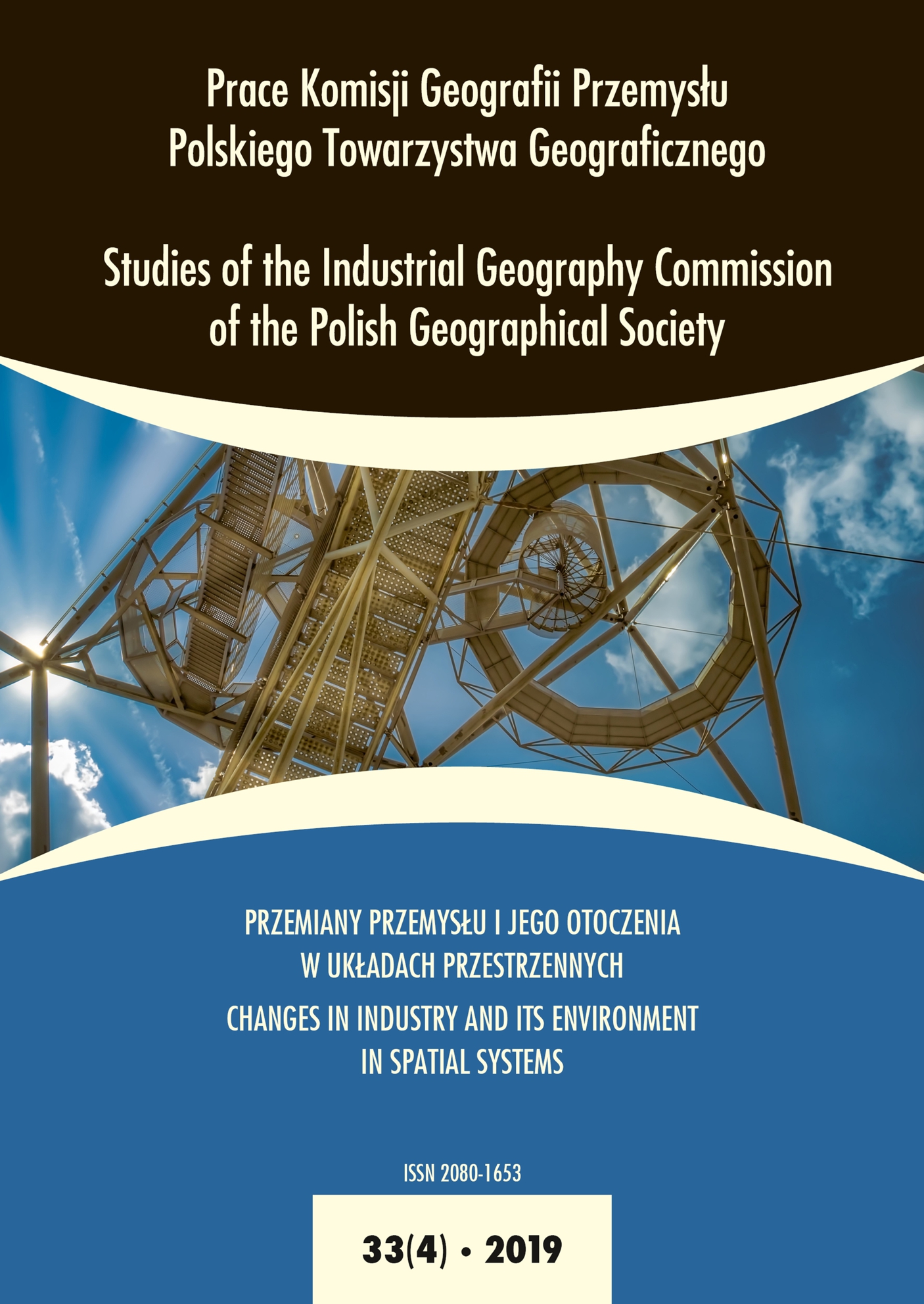Export of Timber from Ukraine against the Background of a Growing Commodity Deficit in the EU Wood Industry
DOI:
https://doi.org/10.24917/20801653.334.9Keywords:
lumber, timber export, timber industry, UkraineAbstract
Export of raw timber from Ukraine to the EU in the last years rose to unprecedented numbers. Growth in exports stems not only from the huge activity on the supply side, but also the growing demand for timber and timber products in the EU. Most Ukrainian wood raw material is recovered, processed and exported in the grey area which is essentially outside the control of state services. Therefore, for a full understanding of the processes of logging, its initial processing, preparation for export and export it is necessary to take into account both the economic and socio-cultural context, as in the case of the Ukrainian wood market it plays an equally important role. The aim of the article is to characterise the socio-economic conditions with particular emphasis on sourcing of wood raw material and its often confidant processing and export mainly to EU countries.
The study used available official yearbooks, statistical studies and materials from public analytical reports prepared by specialised international institutions.
Downloads
Metrics
References
Benthem, M. (2014) (2019, 3 stycznia). Rynek drewna w unii europejskiej i pozycja polskich produktów drzewnych na tym rynku. Pozyskano z http://www.e-handeldrewnem.pl
BRDO (2017) (2019, 3 stycznia). Better Regulation Delivery Office. Pozyskano z http://en.brdo.com.ua/main/brdo-budget-ukraine-loses-200-million-hryvnas-annually-illegal-sawmills/
Earthsiaght (2018) (2019, 3 stycznia). Complicit in corruption: How billion-dollar firms and EU governments are failing Ukraine’s forests. Pozyskano z https://www.earthsight.org.uk/complicitincorruption.pdf
Eurostat (2017). Agriculture, forestry and fishery statistics. Statistical books. ISBN 978-92-7975764-8.
Gackowska, M. (2013). Europejskie tartaki wciąż borykają się z popytem. Gazeta Przemysłu Drzewnego, 12(203).
Honcharuk, O. (2016) (2019, 3 stycznia). How to save Ukrainian forest. Pozyskano z brdo.com.ua/analytics/save-ukrainian-forest.
Lis, W. (2012). Najważniejsze czynniki wpływające na sytuację przemysłu drzewnego w Polsce w 2012 roku. Transfer Inovácií, 2, 207–2012.
Mayer, B. (2018) (2019, 3 stycznia). Porażka leśnej dyplomacji. Puls Biznesu, 14 czerwca 2018.
Mychajlyszyn J. (2016) (2019, 3 stycznia). Karpatska rizanyna. Pozyskano z http://texty.org.ua/d/deforestation/
Norenko, K., Testov, P., Vasylyuk, O. (2018). Lisovi terytorii – dlya dykoyi pryrody: nova polityka lisovogo gospodarstwa. Analitychnyy dokument. Kijów: Wydawnictwo Ekologia Pravo Lyudyna.
Popkov, M. (2016) (2019, 3 stycznia). Zapret na eksport drevesiny v Ukrainie: prichiny, posledstviya, alternativy [Zakaz eksportu drewna w Ukrainie: przyczyny, skutki, alternatywa]. Pozyskano z http://www.fleg.org.ua/docs/1648
Pylayeva, A., Bemmann, A. (2018) (2019, 3 stycznia). Regulyuvannia rynku derevyny v Ukraini ta Nimmechynni. Zvit z lisovoyi polityki. Kyiv. Pozyskano z https://apd-ukraine.de/
UKRSTAT (2016). Ukraina v cyfrach. Statystychnyy Zbirnyk [Ukraina w liczbach. Rocznik Statystyczny]. Kijów: Derzhavna Sluzhba Statystyky Ukrainy.
UKRSTAT (2017) (2019, 3 stycznia). Pozyskano z http://www.ukrstat.gov.ua/
Wesołowski, T., Popkiewicz, M. (2015) (2019, 3 stycznia). Rola lasów w pochłanianiu CO2 w pytaniach i odpowiedziach. Pozyskano z http://naukaoklimacie.pl
Zablotskyi, A. (2017) (2019, 3 January). The budget of Ukraine loses 200 million hryvnas annually because of illegal sawmills. Pozyskano z http://en.brdo.com.ua/main/brdo-budget-ukraine-loses-200-million-hryvnas-annually-illegal-sawmills/
Downloads
Published
How to Cite
Issue
Section
License
Articles are published under the terms of the Creative Commons License (CC BY-ND 4.0; Attribution– NoDerivs).

